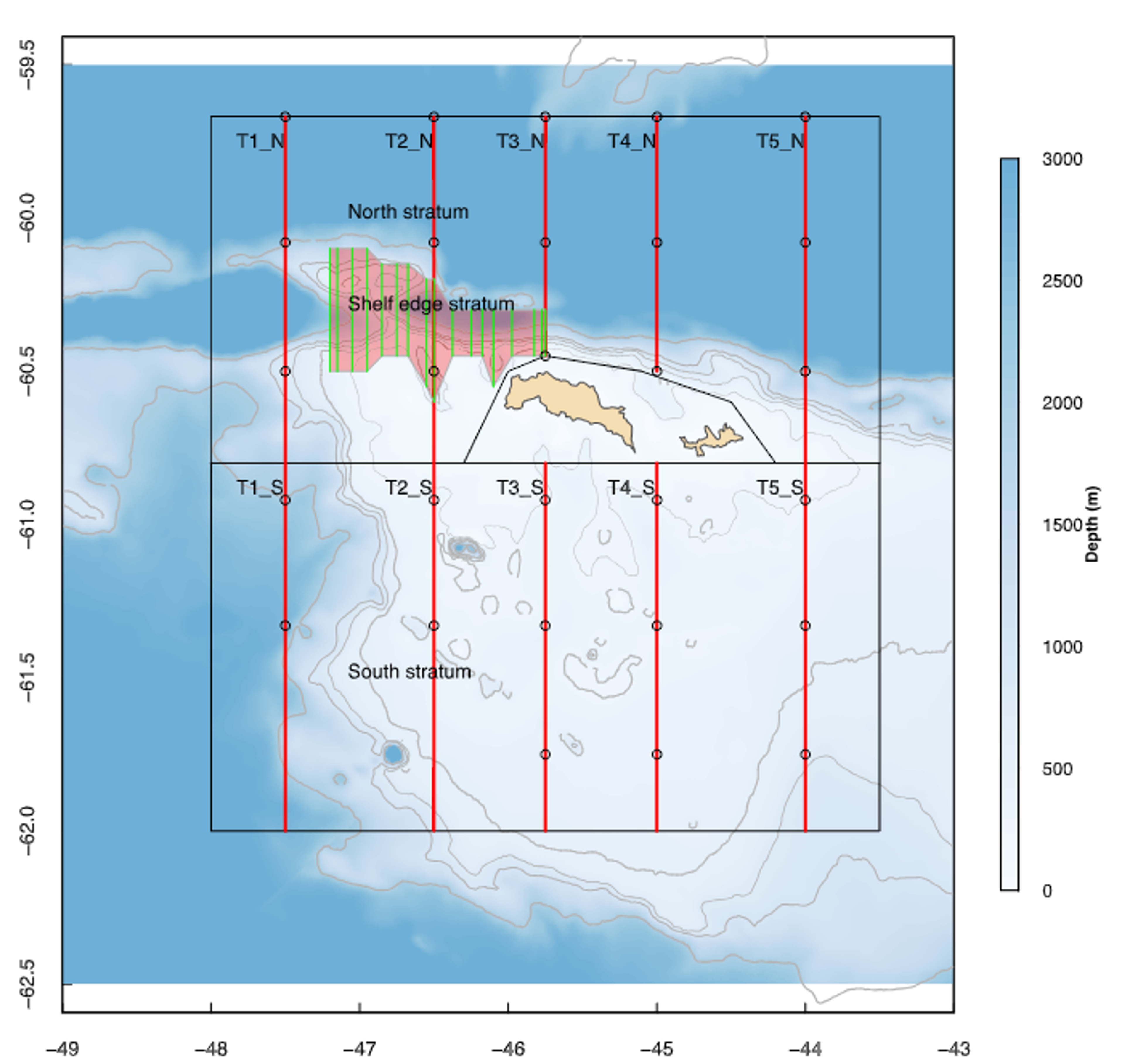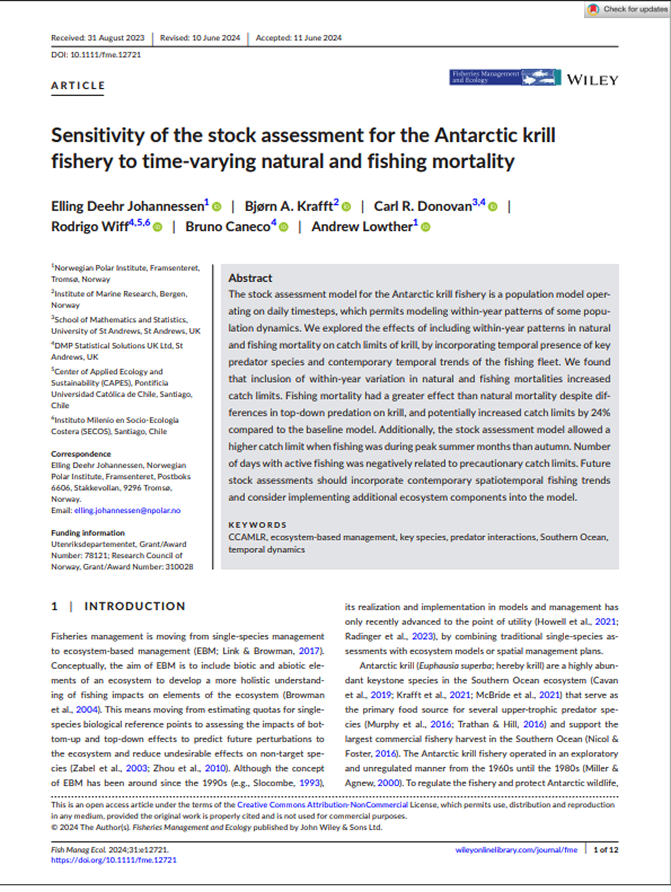Biomass
Fisheries management
Antarctic ecosystem
Krill (Euphausia superba)
Distribution and biomass estimation of Antarctic krill (Euphausia superba) off the South Orkney Islands during 2011-2020
Summary
This study reports findings from a decade-long acoustic survey (2011-2020) that tracked Antarctic krill populations around the South Orkney Islands through collaboration between Norwegian scientists and the krill fishing industry.The South Orkney region consistently supported large krill populations, with biomass averaging between 1.4 and 7.8 million tonnes annually across the 60,000 km² survey area. No significant trends were observed over the ten-year period.Krill concentrated primarily along the shelf edge and submarine canyons on the northern side of the South Orkney Islands. Current harvesting levels remain well below the CCAMLR precautionary exploitation rate of 9.3%.The research demonstrates that commercial fishing vessels can effectively serve as platforms for scientific monitoring, providing a cost-efficient approach to long-term krill population assessment while maintaining sustainable fishing practices.

1
This map shows the survey design used by the Norwegian Institute of Marine Research around the South Orkney Islands from 2011 to 2020. The area is divided into strata (sections) with systematic transects (survey lines) running through them. The dots indicate fixed locations where trawl sampling was conducted to collect krill specimens. The southwestern portion of the survey area falls within a protected zone where trawling is prohibited, so no sampling dots appear in that region.Key Findings
1
Average krill biomass ranged from 1.4 to 7.8 million tonnes during 2011-2020, with high interannual variability 2
No significant monotonic trends in krill biomass were detected over the 10-year period 3
Highest krill densities were consistently found associated with the shelf break and submarine canyons on the north side of the South Orkney Islands 4
Comparison with CCAMLR's 9.3% reference exploitation rate indicates current fishery management is precautionary 5
Industry-based vessel surveys prove to be a cost-effective approach for long-term krill monitoring 

